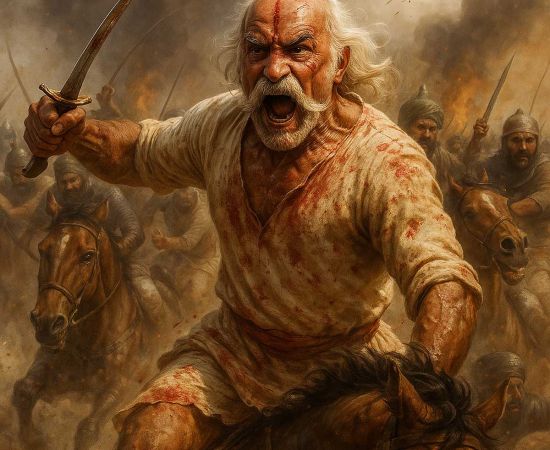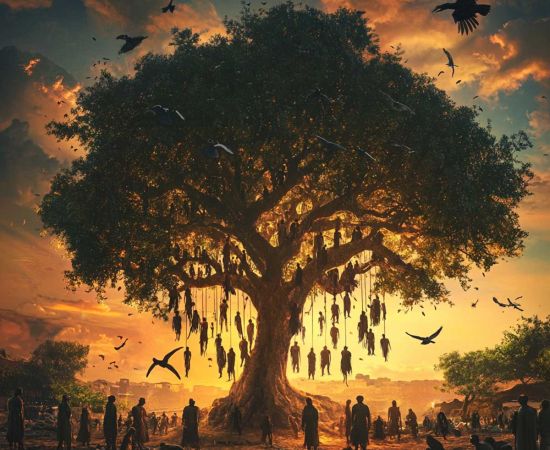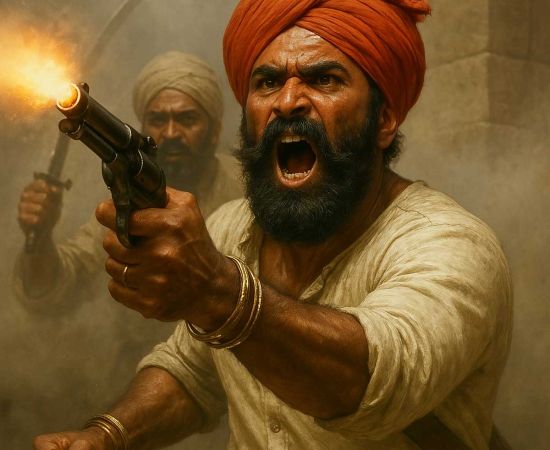MORE COVERAGE
Twitter Coverage
Satyaagrah
Written on
Satyaagrah
Written on
Satyaagrah
Written on
Satyaagrah
Written on
Satyaagrah
Written on
JOIN SATYAAGRAH SOCIAL MEDIA
Hinduism, Hindutva and the Contest for the Meaning of Hindu Identity: Swami Vivekananda and V.D. Savarkar
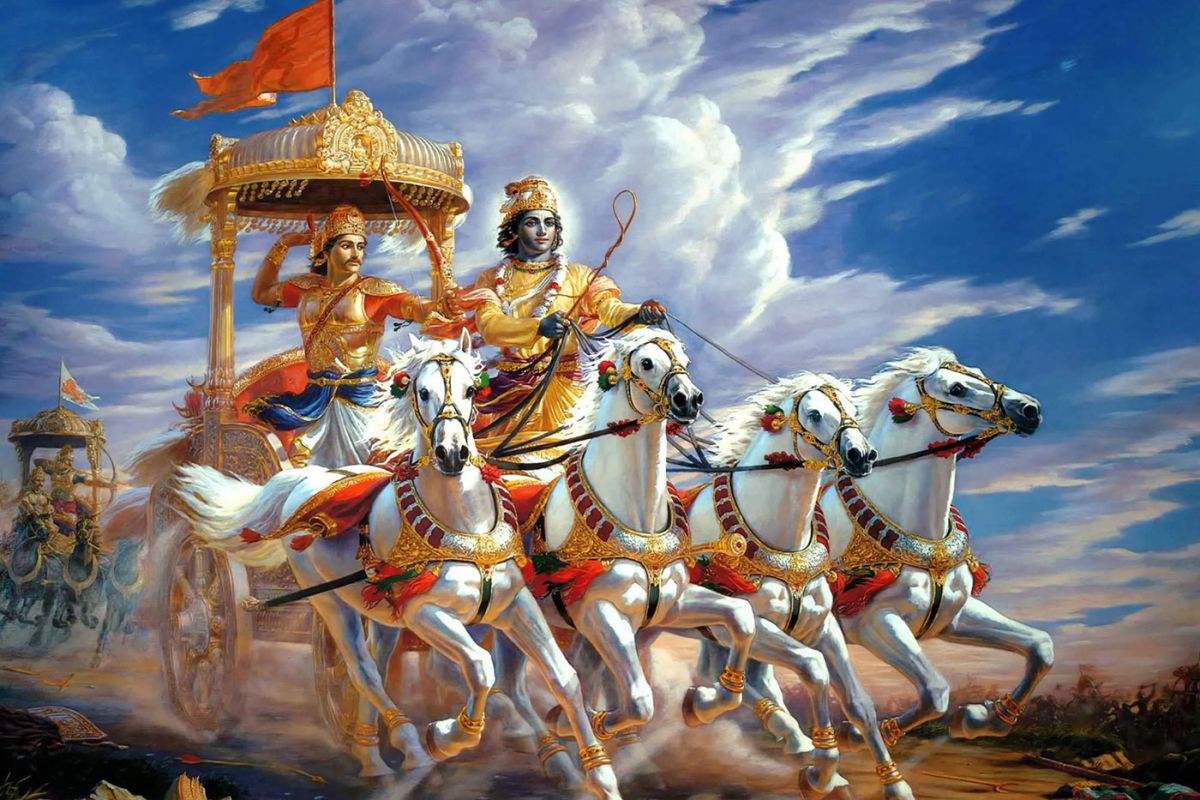
The word, ‘Hindutva’ an abstract noun formed by appending the Sanskrit masculine ‘tva’ to ‘Hindu’, and loosely translated as ‘Hinduness’ is of relatively recent origin. Although it was popularized in Bengal towards the end of the nineteenth century, its current prevalence must be attributed to the work of Vinayak Damodar Savarkar (1883-1966). While the author of works such as Indian War of Independence 1857 (1908) and Hindu Pad-Padashahi (1925), there is no doubt that Savarkar’s most important and influential work is Hindutva ; Who is a Hindu? Written while Savarkar was jailed in the Andaman Islands and subsequently in Ratnagiri, and published in 1923, Hindutva became the source of the principles that shaped the ideology of Hindu Nationalism in the 1920’s and the term is widely employed today to describe various expressions of the Hindu nationalist movement. The popularization of the word ‘Hindutva’ and its extensive use in current discourse to describe a broad range of ideologies and organizations have resulted in imprecision and obscurity of meaning. It is also true that many of the contemporary movements espousing versions of the doctrine of Hindutva seek legitimacy by claiming continuity with the ideals and teachings of Swami Vivekananda (1863-1902). In view of the present significance, religious and political, of various versions of Hindutva and the connections made with the life and teachings of Swami Vivekenanda, it is important to clarify the original context and meaning of the term as used by V.D. Savarkar, assess the claims of continuity made with Swami Vivekananda and consider the implications of any differences in understanding. My paper is a preliminary effort to address these tasks.
In the “Essentials of Hindutva” Savarkar seeks to describe the characteristics of Hindu identity. His work is an attempt to answer the question “Who is a Hindu?” by providing a definition of Hindutva or “Hinduness.”
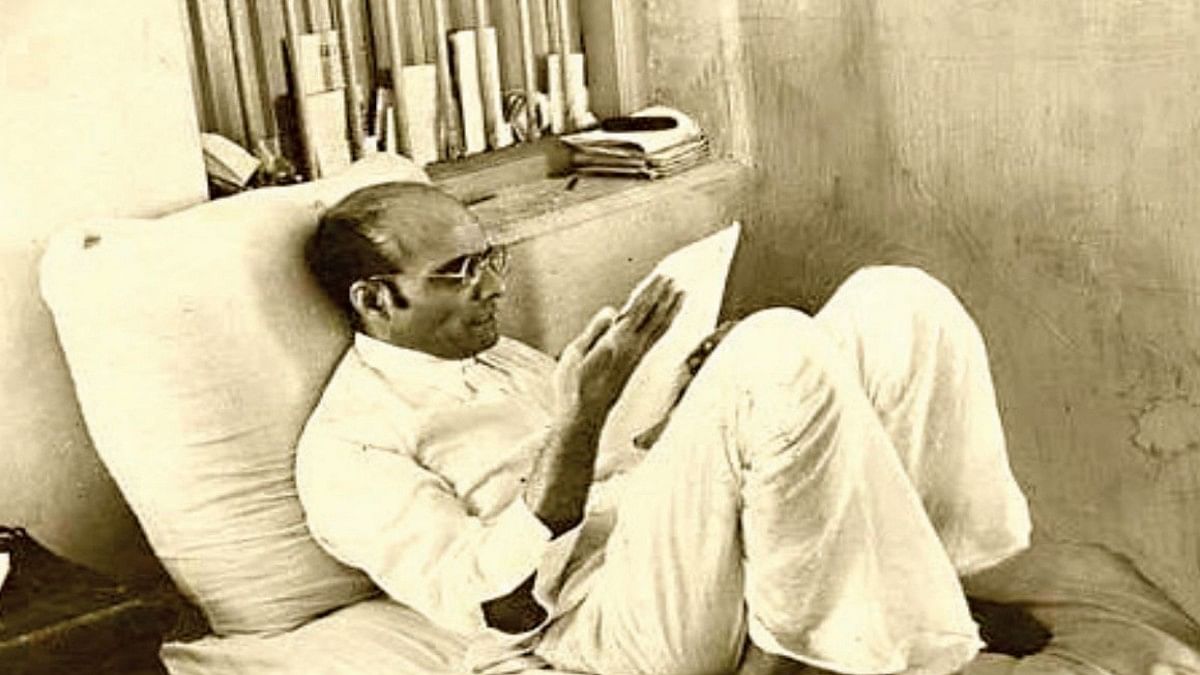 |
Savarkar’s criteria of Hindu identity consist of three interrelated attributes.
- The first is geographical. India or Hindusthan, as Savarkar would prefer to call it, constitutes a distinct geographical entity demarcated by mountains, oceans and rivers and a Hindu is “primarily a citizen, either in himself or through his forefathers of ‘Hindusthan.’ On the basis of this first criterion, argues Savarkar, an American, for example, who becomes a citizen of Hindusthan is entitled to be treated as a countryman. He will not be incorporated, however, into the Hindu fold if he does not satisfy the second requisite of Hinduness since the term, Hindu, means much more than geography.
- This second, and perhaps most important requirement of Hinduness is what Savarkar refers to as “common blood” or jati. A Hindu is a descendant of Hindu parents and shares with other Hindus a common blood traceable to the Vedic fathers or Sindhus. This argument rests essentially on an intuitive or affective claim. We are not only a nation but a Jati, a born brotherhood. Nothing else counts, it is after all a question of the heart. We feel that the same ancient blood that coursed through the veins of Ram and Krishna, Buddha and Mahavir, Nanak and Chaitanya, Basava and Madhava, of Rohidas and Tiruvelluvar courses throughout Hindudom from vein to vein, pulsates from heart to heart. We feel we are a JATI, a race bound together by the dearest ties of blood and therefore it must be so.
On the basis of the first two criteria of Hinduness, Muslim citizens of India may indeed be considered as Hindus. This was a possibility recognized by Savarkar.
The majority of the Indian Mohammedans may, if free from the prejudices born of ignorance, come to love our land as their fatherland, as the patriotic and noble-minded amongst them have always been doing. The story of their conversions, forcibly in millions of cases, is too recent to make them forget, even if they like to do so, that they inherit Hindu blood in their veins. But can we, who are here concerned with investigating into facts as they are and not as they should be recognize these Mohammedans as Hindus?
- Savarkar answers his own question negatively by proposing a third criteria of Hinduness in addition to love for a common fatherland (rashtra) and race or blood (jati). This is the tie of homage to Hindu culture or civilization. Savarkar names this common culture as Sanskriti on the basis of the claim that Sanskrit is the language that expresses and preserves all that is worthy in the history of the Hindus. It includes a shared history, literature, art, law festivals, rites, rituals and heroes. This criteria was the basis for the exclusion, not only of Indian Muslims, but also of Indian Christians. Despite sharing territory and blood, they had, in Savarkar’s words, “ceased to own Hindu civilization (Sanskriti) as a whole. They belong, or feel that they belong to a cultural unit altogether different from the Hindu one.”
Savarkar was well aware of the existence of certain syncretistic communities in India, such the Muslim Bohras and Khojas of Gujarat who incorporated many elements of Sanskriti culture into their daily life. In order to exclude such groups from his definition, he turned quite late in his work to a consideration of the religious dimension of Hinduness. Hinduism or Hindu dharma includes all of the religious traditions, Vedic and non-Vedic, that originate from the soil of India. While the majority of Hindus subscribe to what is denoted as Sanatana Dharma or Vaidik Dharma, other traditions having roots in India such as Jainism, Sikhism, Buddhism must be included in the generic category of Hinduism or Hindu dharma. It is very important to note that, as the religion of the Hindus, Hindu dharma, for Savarkar, partakes of all the essentials that characterize a Hindu such as common territory, race and culture. In addition, and this may, given its importance for Savarkar, even be regarded as a fourth attribute of Hinduness, all traditions included under the umbrella of Hindu dharma look upon India, not only as fatherland (Pitrbhu), but also as holyland (Punyabhu). In spite of its late appearance in his analysis, Savarkar gives considerable significance to this requisite of Hindutva and uses it as the ultimate reason for the exclusion of Muslims and Christians.
For though Hindusthan to them is Fatherland as to any other Hindu yet it is not to them a Holyland too. Their Holyland is far off in Arabia or Palestine. Their mythology and Godmen, ideas and heroes are not the children of this soil. Consequently their names and their outlook smack of foreign origin. Their love is divided. Nay, if some of them be really believing what they profess to do, then there can be no choice – they must, to a man, set their Holyland above their fatherland in their love and allegiance. That is but natural. We are not condemning nor are we lamenting. We are simply telling facts as they stand. We have tried to determine the essentials of Hindutva and in doing so we have discovered that the Bohras and such other Mohammedan or Christian communities possess all the essential qualifications of Hindutva but one and that is that they do not look upon India as their Holyland.
In conclusion then, a Hindu, for Savarkar is one who ‘looks upon’ the land that extends from the Indus to the Seas as his fatherland, who inherits the blood of his Vedic ancestors, who claims Sanskrit culture as his own and who ‘addresses’ Sindhusthan as his Holyland.
With this clarification of Savarkar’s definition, we can now turn to Swami Vivekananda in order to assess his understanding of the meaning of Hindu identity. Examination of the lectures and writings of Vivekananda suggest that he understood the terms ‘Hindu’ and ‘Hinduism’ to indicate primarily an allegiance to specified doctrines and values. He used both terms to denote a religious identity and most importantly, does not distinguish, like Savarkar, between ‘Hindu’ and ‘Hinduism.’ This distinction, we must remind ourselves, was central and integral to Savarkar’s discussion. For Savarkar, Hinduism is only the ‘ism’ of the Hindu and refers specifically to the system of religious belief and practice. Hindu, on the other hand, refers to the territorial, racial and cultural factors constituting the Hindu nation. For Savarkar, one cannot determine the character of Hinduism without first defining who is a Hindu.
For Vivekananda, a Hindu, first and foremost, is a person who subscribes to the doctrines and practices of Hinduism. Although it is true that Vivekananda identifies the essence of Hinduism with the Vedanta tradition and, quite specifically, with the Advaita world-view, he does not limit his use of the term to the Vedanta or Advaita tradition. Hinduism, for Vivekananda, is an umbrella term embracing Vaishnavites, Shaivites, Shaktas, Vishishtadvaitins, Dvaitins and Advaitins. The significant point here is that both terms describe a religious identity. “If a Hindu is not spiritual”, says Vivekananda, “I do not call him a Hindu.” In Swami Vivekananda’s first major address before the Parliament of Religions, delivered on 19th September, 1893, he consistently uses the word ‘Hindu’ as indicative of religious belief. In one of his most important addresses entitled, “The Common Basis of Hinduism”, and delivered the city of Lahore after his return to India from the Parliament, Swami Vivekenanda identified the doctrines shared by all Hindus. A Hindu, according to Vivekananda, is one who believes in the following: the authority of the Vedas, God, the cyclical order of creation, preservation and dissolution, the immortality of the atman and its innate purity and perfection, reincarnation and religion as realization. This is the address in which occurs one of Vivekananda’s most famous and often-quoted utterances identifying a central attribute of Hindu identity.
Mark me, then and then alone you are a Hindu when the very name sends through you a galvanic shock of strength. Then and then alone you are a Hindu when every man who bears the name, from any country, speaking our language or any other language, becomes at once the nearest and the dearest to you. Then and then alone you are a Hindu when the distress of anyone bearing that name comes to your heart and makes you feel as if your own son were in distress.
The significance of this statement, for our purposes, is that his application of the term ‘Hindu’ appears to transcend boundaries of nationality, and language. Since language is so closely related to culture, one may assume that Swami Vivekananda would not hesitate to apply the term to persons belonging to a variety of cultural traditions. In the “Future of India”. Vivekananda explicitly acknowledges, unlike Savarkar who argued for a common jati or blood and culture, that India was home to a variety of racial and cultural groupings.
Here have been the Aryan, the Dravidian, the Tartar, the Turk, the Mogul, the European – all the nations of the world, as it were pouring their blood into this land. Of languages the most wonderful conglomeration is here; of manners and customs there is more difference between two Indian races than between the European and and the Eastern races.
While acknowledging the problematic use of the term ‘race’ by both Savarkar and Vivekananda, it is clear that Vivekananda locates the meaning of Hindu identity in an ecumenical hermeneutic consisting shared religious doctrines and not, like Savarkar, in claims common blood, culture, or territory.
The land of India has special sacred significance for Vivekananda and, like Savarkar, he refers to India as a punyabhumi He uses the term, however, in a more descriptive manner to describe India as a land of spirituality and as the place of origin for several of the world’s religions. There is no evidence in Vivekananda’s lectures and writing to suggest that that he uses the term, like Savarkar, as a fundamental requirement of Hindu identity and as a criterion of demarcation and exclusion. As Ainslee T. Embree notes, Vivekananda’s love for India and Hinduism was never exclusive and, “above all it was never anti-Muslim or anti-Christian.”
It is also important to note that Swami Vivekananda makes no deliberate effort, like Savarkar, to include Buddhist or Jainas in the category of Hindus. While cognizant of the close historical and philosophical ties between Hinduism and Buddhism, he characterizes their relationship to that obtaining between Judaism and Christianity. He speaks of Buddhism as a movement for reformation and a logical development of Hinduism. Both traditions need each other for their growth and well-being.
The clear differences between V.D. Savarkar and Swami Vivekananda in their respective understanding and use of the terms ‘Hindu’ and ‘Hinduism’ lead to sharply divergent ways of thinking about the nature and significance of Hinduism in our contemporary world. While Savarkar limits the meaning of the Hinduism to religious belief and practice, it still “necessarily partakes of all the essentials that characterize a Hindu.” These include the characteristics of common blood, culture and consideration of India as holyland. A religious or cultural convert, therefore, meets only one of the conditions of Hindutva, and, while willing to do it as an exception, he struggles to receive Sister Nivedita, one of the foremost western-born disciples of Swami Vivekananda, as a Hindu. Swami Vivekananda, on the other hand, does not distinguish between Hindus and Hinduism and employs both terms to designate adherence to specific doctrines and practices.
Savarkar narrowly identifies Hinduism with nation (rashtra), race (jati) and culture ( Sanskriti). A Hindu is a practitioner of one of the religious traditions originating in India, but also one who shares ties of blood, culture, and veneration for India as holy land with other Hindus. Although he was a passionate nationalist and great lover of India and her people, Swami Vivekananda treats Hinduism as a distinctive world-view with a relevance and appeal that transcends ties of nationality, race and culture. In his lectures to western audiences, he presented the Hindu tradition as one that universally addresses the human condition and predicament and as a real option for people who do not have ancestral or cultural roots in the Indian sub-continent. He was the earliest to envisage and articulate the possibility. We may say that, today, being Hindu, for Swami Vivekananda, was not the same as being Indian.
While the tensions between these two very different ways of thinking about the nature of Hinduism are still very much with us and reflected in many contemporary debates and struggles, Swami Vivekananda’s vision of Hinduism as a tradition capable of speaking to human beings across the boundaries of nationality, race and ethnicity is increasingly being realized in various communities across our world. Although not without ambiguities and contradictions, it is already lived out in different ways in the lives of diasporic communities with ancestral roots in the Indian sub-continent but whose, cultural and national allegiance lies elsewhere. Vivekananda’s vision is also being realized by many who have no South Asian ancestral roots but who seek life’s meaning through Hindu categories of thought and practice.
V.D. Savarkar’s parochial identification of Hinduism with what he refers to a nation, race and culture make it difficult for Hinduism to legitimately proclaim itself as a world religion. It cannot do this while clinging to the particulars of territory, race and culture. If the Hindu tradition claims universal validity for its insights, these must, of necessity, transcend the specificities prescribed by Savarkar. Vivekananda’s understanding of the nature and meaning of Hindu and Hinduism, unlike Savarkar, offers true possibilities for the realization of a Hinduism without boundaries, speaking to all human beings.
As Hindu communities grow and flourish outside of India, as well as within India, the alternatives represented by Swami Vivekananda and V.D. Savarkar will be among the important ones that they confront in their search to determine what it means to be Hindu and the character of Hindu relationships with other religions.
- Does not distinguish between Hindus and Hinduism (as Savarkar).
- Sees India as punyabhumi, but does not use it as a requirement of Hinduness
- Attitude to Buddhism and Jainism –do we see the concern to include them in the category of Hindus?
- What are the implications of Vivekananda’s different understanding?
- What is Vivekananda’s attitude to Muslim and Christian communities in India?
- His attitude to the Hinduness of Nivedita.
- Does Vivekananda really address the significance of India’s religious diversity – Muslims/Christians? – does his view of religious pluralism help?
- Vivekananda’s universalization of the meaning of Hinduism?/reality of sepaation of religion and culture in contemporary world – Hindu appeal to those who are not Indian in ethnicity.
 Support Us
Support Us
Satyagraha was born from the heart of our land, with an undying aim to unveil the true essence of Bharat. It seeks to illuminate the hidden tales of our valiant freedom fighters and the rich chronicles that haven't yet sung their complete melody in the mainstream.
While platforms like NDTV and 'The Wire' effortlessly garner funds under the banner of safeguarding democracy, we at Satyagraha walk a different path. Our strength and resonance come from you. In this journey to weave a stronger Bharat, every little contribution amplifies our voice. Let's come together, contribute as you can, and champion the true spirit of our nation.
 |  |  |
| ICICI Bank of Satyaagrah | Razorpay Bank of Satyaagrah | PayPal Bank of Satyaagrah - For International Payments |
If all above doesn't work, then try the LINK below:
Please share the article on other platforms
DISCLAIMER: The author is solely responsible for the views expressed in this article. The author carries the responsibility for citing and/or licensing of images utilized within the text. The website also frequently uses non-commercial images for representational purposes only in line with the article. We are not responsible for the authenticity of such images. If some images have a copyright issue, we request the person/entity to contact us at satyaagrahindia@gmail.com and we will take the necessary actions to resolve the issue.
Related Articles
- Dear NSUI, Bhagat Singh And Subhas Chandra Bose Admired Savarkar And His Ideas
- An Artisan Heritage Crafts Village: Indigenous Sustainability of Raghurajpur
- Jagannath Temple administration issues clarification on proposed sale of temple lands
- Why India’s temples must be freed from government control
- Culture And Heritage - Meenakshi Temple Madurai
- अथ रामचरितमानस प्रकाशन कथा: गीता प्रेस, गोरखपुर ने 1938 से रामचरितमानस का प्रकाशन शुरू किया
- Srikalahasti Temple, Dakshina Kailash
- Biggest Wonder of the World : Kitchen of Lord Shri Jagannath
- Why Hindus not claiming their temples back from the Government control: Is pro-Hindu govt will always be in power
- Shri Murudeshwar Temple: Home To The World’s Second Tallest Shiva Statue
- Hindu Survival: What Is Needed To Be Done?
- The forgotten temple village of Bharat: Maluti
- Indonesia: Sukmawati Sukarnoputri, daughter of Indonesia's first president becomes a Hindu leaving Islam
- रामचरितमानस एवं उसके अंग्रेजी अनुवाद तथा हिंदी के अकेडमिक्स का दोहरा रवैया
- Gita Press Gorakhpur – Bringing Sacred Hindu Texts to Every Hindu Home



















